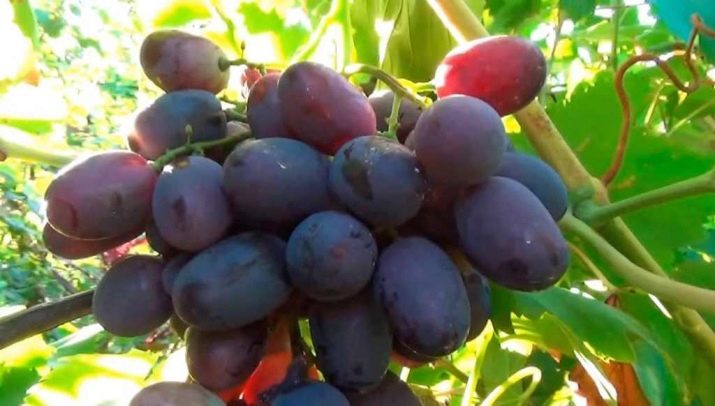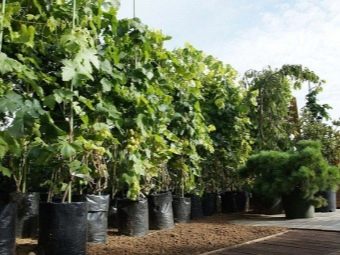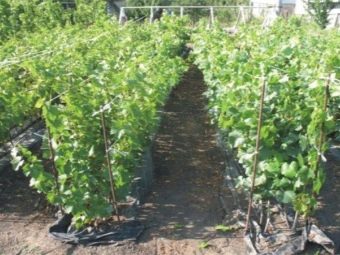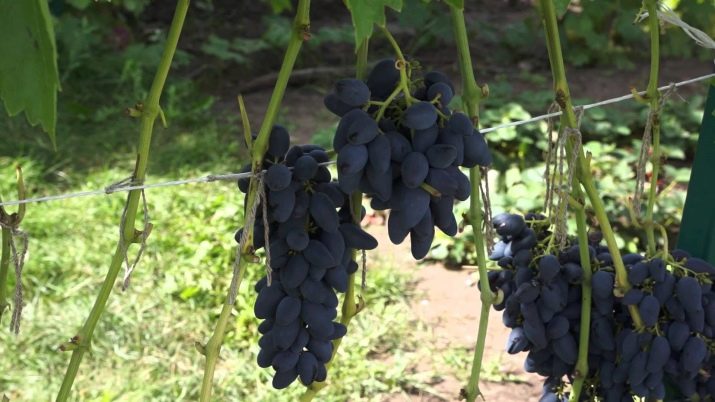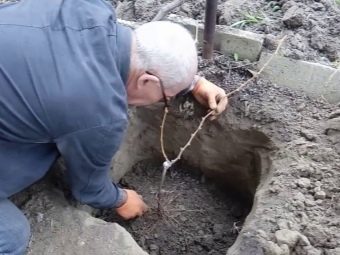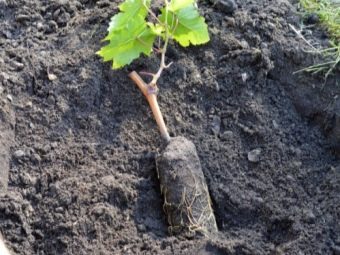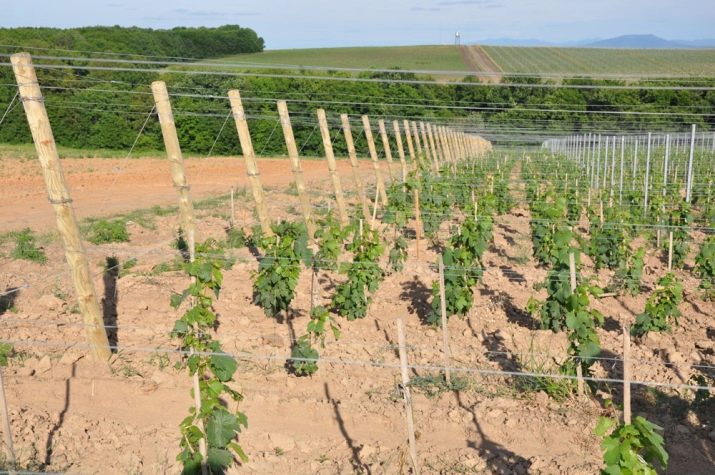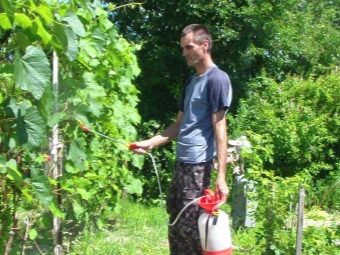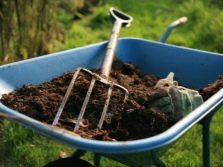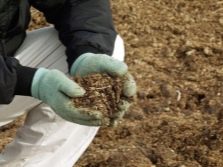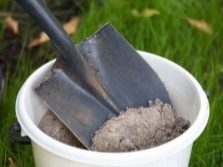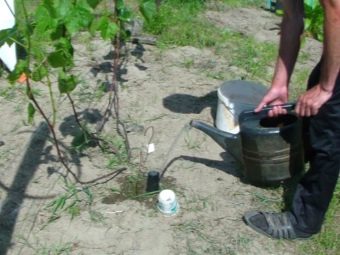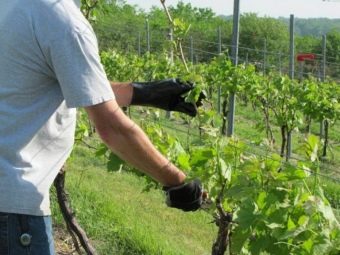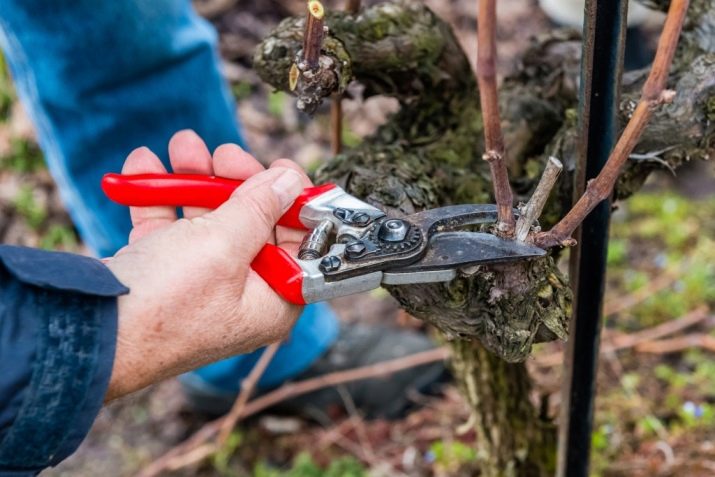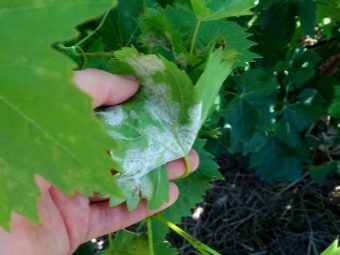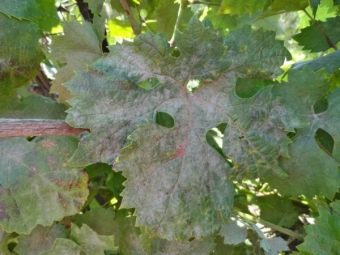Viking grapes: characteristics of the variety and cultivation

Modern breeders have tried and brought a lot of very different and unusual cultures.So, today we know a huge number of all sorts of grapes and their hybrids. Each species has its own name, distinctive characteristics. In this case, the care and cultivation of varieties are also different. Today, many amateur gardeners and professionals, as well as gardeners, produce such a grape as Viking.
This garden plant is distinguished by its endurance, strength, early ripening, and its fruits are very tasty and fragrant. Therefore, it is this grape that has earned special reviews of gardeners, as well as the most honorable praise from gourmets.
History and culture description
The grape "Viking" is known on the agricultural market for a long time. It was brought by V.V. Zagorulko, a famous Ukrainian breeder who, during his activity, received 25 very different grape varieties. All of them are distinguished by early ripening, frost resistance, they excellently resist many diseases, and at the same time they have large, tasty, aroma-rich fruits.
The grape "Viking" - one of these amazing species, having fame and popularity among many summer residents. This variety was the result of the crossing of two grape varieties: “Codreanca” and “AIA”. The plant is well cultivated in the southern regions, where its adaptation to climate and weather conditions is excellent. It has the appearance and its own characteristics that can be revealed by making a detailed description of the variety:
- strong tall climber;
- leaves are large, with a pronounced color, have the form in the form of five blades;
- small green inflorescences have excellent aroma and are bisexual;
- large (about 22-34 mm), oblong berries have a dark blue color, and their flesh is very juicy, has a spicy taste and is covered with a thin imperceptible peel;
- berries form a large or medium-sized cluster of conical shape.
The Viking grape variety has a high yield. Its ripened fruits can remain on the vine until the end of September, and the clusters are well preserved and transported.
Features of the form
Viking bushes are fast growing. Already in the first decade of June, the flowers begin to bloom. The flowers themselves are bisexual, so they are perfectly pollinated. The harvest of this table variety can be collected on the 105th or 120th day from its planting.
It is best to plant shoots on easily warmed soils that are not blown by strong winds.
This grape variety is very fond of summer residents because of the early and early ripening of the crop. And also the plant is a perennial, its attractive appearance will decorate the site or garden for more than one year. The characteristic of the variety "Viking" stands out with some important features that distinguishes it from other hybrids:
- one of the first varieties in the season, giving an early harvest;
- grapes are distinguished by their unusual taste and attractiveness;
- The weight of the hybrid can be about 500-700 g;
- berries are very dense, not prone to cracking, for a long time retain their original appearance;
- the hybrid has excellent frost resistance, is able to withstand a temperature drop to -21 degrees Celsius.
Usually, the Viking hybrid grows and gives a good harvest in the southern regions, but still this variety can be grown in the middle lane. In these climatic conditions it is necessary to cover the grapes for winter, it can also be grown in greenhouses.
Landing
Before planting grapes, you must select a suitable place for this. Since the Viking variety grows and gives an excellent harvest for a long time in one place, a completely smooth, well-lit area is chosen, without the presence of weeds on it. Then the soil needs to be dug and fertilized. The result of the harvest, its quality and quantity will depend on compliance with the norms and rules of planting.
Young shoots (seedlings or cuttings) of grapes can be planted in early spring.Before planting, you must carefully check the root system, make sure that there is no damage, the root is not affected by the disease or fungus. The landing itself is carried out in several stages:
- first of all it is necessary to dig a hole or a trench, the depth of which should reach approximately 50 or 70 cm;
- plant the plant at a distance of 1-1.25 m from each other;
- the distance between the holes or trenches themselves should not be less than 1.5 m;
- to the bottom of the hole must be poured humus;
- tested and treated seedlings (a special mixture for the roots of water, clay, cow dung) are placed in a hole;
- the wells are covered with earth and watered abundantly with slightly warm water.
After planting, the escape is tied to a special peg. This process will ensure the proper growth and development of the plant.
Care
Care for the young of the Viking variety must be exercised with special care, while being careful and scrupulous. In the dry season, it is necessary to water the grapes abundantly so that the seedlings do not dry out. Soil loosening is carried out in a timely manner, as well as its mulching. When caring for this hybrid, some rules are followed:
- the main irrigation is carried out in the dry season, when the vegetation of the plant occurs, and during the period of flower formation;
- high-quality mulching will ensure the preservation of moisture in the soil, will affect the reduction of weeds, and also protect the root from hypothermia;
- during the growing season, the bushes need feeding, which must be done three times, with a monthly intermediate interval;
- Irrigation processes must be carried out;
- it is also necessary to observe timely loosening of the soil - this allows normal oxygen to reach the root system;
- timely cutting of bushes leads to a good harvest.
Many dacha owners use agrofiber when leaving. It perfectly retains the moisture necessary for the plant, and its use reduces the growth of weeds.
Top dressing
Special attention should be paid to the question of how and how to fertilize the soil in order to grow a bountiful harvest. Fertilizer for Viking grapes is suitable for both organic and mineral. If the region is dominated by sandy or clay soils, then manure will be the best top-dressing. It should usually be prepared in the fall. Some of the fertilizers can also be useful and effective, for example:
- bird droppings;
- compost;
- wood ash;
- peat.
With their proper application and introduction into the soil, you can get healthy, well-fruiting bushes, which in future will delight its owner with an excellent harvest. Every soil where poor soil is deprived of nutrients requires the right amount of fertilizer.
Watering and pruning
Garden early hybrid "Viking", as a rule, does not like excessive watering. These grapes must be watered at a certain time and a limited number of times. In the second decade of summer, the abundance of moisture is simply unacceptable.
After the sapling was watered when planted, it is moistened several more times. Pruning of the vine, flowering, the formation of fruit - these are the moments when the grapes need watering. Mandatory watering and at the end of the harvest.
Variety "Viking" is a strong-growing crop, so the bushes must be timely cut. This process is carried out in the autumn, while simplifying the excellent shelter of the bush, which allows the plant to provide excellent wintering. Producing a young sapling, the summer resident leaves from 3 to 8 shoots, which are suitable for fruiting. The benefits of pruning are:
- the correct form of a bush is formed;
- saves the plant from overgrowth;
- quality of a berry improves, it does not decrease in size;
- yield increases.
The vine of this grape is quite flexible and supple, with proper care allows you to create arched forms of the bush.
Diseases
Huge inconvenience, as well as great damage to crop yields and the plant itself are delivered by pests and some common diseases. For grapes, birds and wasps cause significant damage. They destroy and spoil the fruit, making raids on the growing land of grapes. Their pilgrimage fully affects the quantity and quality of the harvest.
If it is possible to cope with pests by installing special protection measures, then it will be more difficult to fight diseases. The most common diseases that this variety is subject to are powdery mildew (mildew), as well as oidium. Both of these diseases are of fungal origin, so first of all you need to resort to mechanical preventive measures:
- timely pruning shoots of secondary origin;
- it is necessary to eliminate all stepchildren who do not take part in the formation of the crown, that is, those that drop out;
- abundant supply of ripening fruit with sunlight;
- provide excellent airing of all clusters.
The most dangerous disease for grapes is mildew. This fungus is very stable and adaptable, it can survive even the winter and frost. It can be recognized by white bloom or oily stains. Oidium is capable of harming all parts of the shrub, its presence is revealed by a powdery gray bloom. Such solutions as “Skor”, “Karatan”, “Topaz” and other drugs perfectly cope with the fungus.
Characteristics of the variety "Viking" and its features of cultivation, see the following video.

